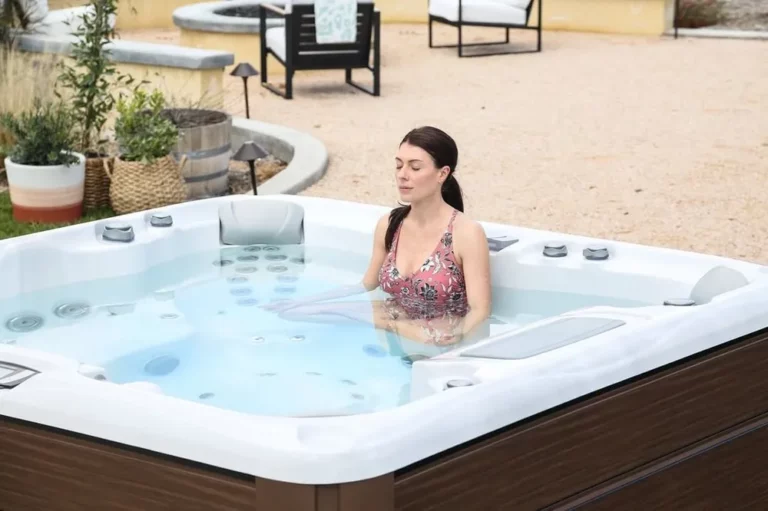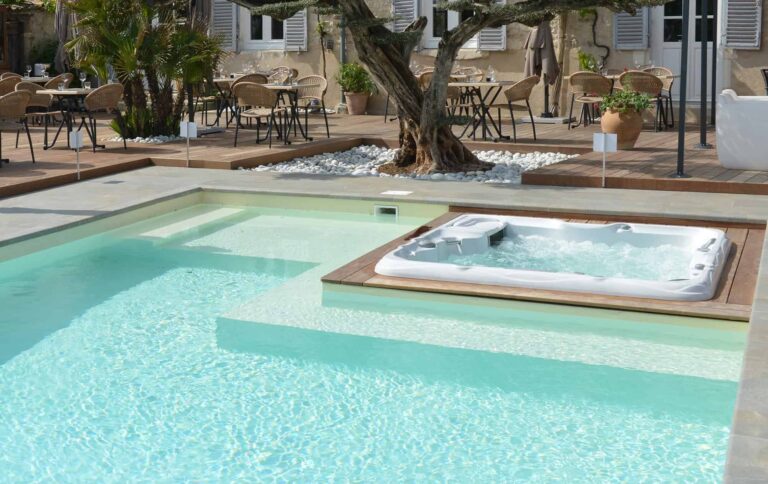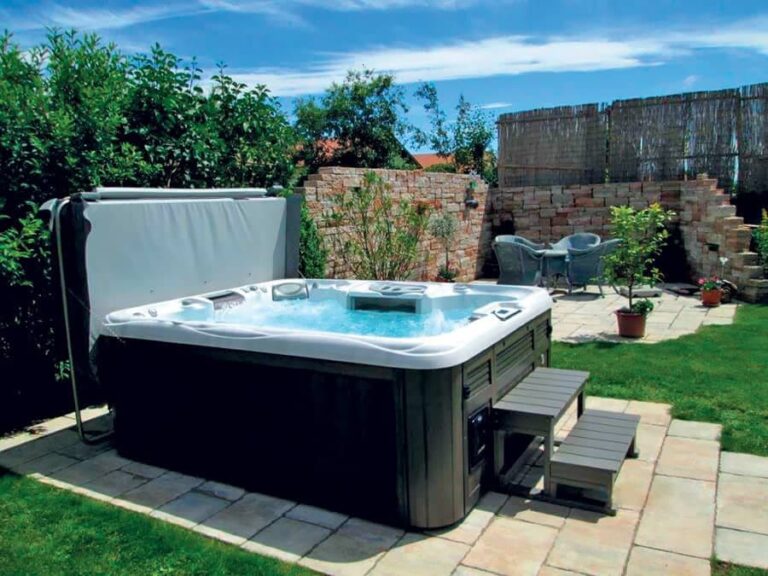In recent years, the popularity of building more sustainable, nature-friendly backyards only seems to have grown.
But it can be an overwhelming task if you've never taken on a project before, such as adding elements that attract animals or tending to the growth of vegetables and other plants.
This handy guide gives you 12 easy options to get started, so whether you want to build a bee garden, go solar or design a living privacy screen, we have the guidance you need.
Let's dive in!
1. Collect and reuse materials
One of the most environmentally friendly choices you can make for your backyard is to choose to recycle rather than buy new.
Look around your home or ask family and friends if they have old pots, unused garden tools, bird feeders, unwanted cut grass or other items you might need.
You can use recycled materials for almost any backyard project. Plant or grass clippings make great natural compost. Old rocks and stones can be used for hardscaping.
What you can do is limited only by your creativity, which is why this is our top tip.
2. Build bird feeders, baths and houses
Birds play a vital role in any backyard ecosystem by eating insects and spreading seeds, among other things.
Wild birds are also a delightful addition to any backyard with their interesting songs and beautiful colors.
Attracting birds to your garden is a relatively simple process that requires food, nesting sites and water.
Free subscriptions are available online for DIY birdbaths, bird feeders and birdhouses. Building these pieces can be easy and relatively inexpensive, plus it's a fun weekend project for the whole family.
3. Create a rock garden
If you have many rocks of different sizes on your property, you can create a beautiful rock garden or similar hardscape elements that make an excellent sight in your backyard.
Building hardscape elements in your backyard also helps reduce the amount of grass you need to water and mow, making it an environmentally friendly project.
Some sustainable materials for hardscaping and water conservation include permeable rocks, pea gravel or even recycled concrete, also called Urbanite.
4. Use pots to make toad habitats
If you have old, cracked or unused pots made of plastic or clay, you can add a playful touch to your backyard by turning your pots into homes for toads.
Toads also eat up to 100 insects or snails daily, making them a great natural pest control measure for your garden or yard.
To make a house, cut a hole in a plastic container and lay it sideways on the ground. Place a stone on top to hold it in place or reinforce it with more dirt.
Or, if you live in a warmer climate, consider using an earthen pot that stays cooler than plastic when temperatures begin to rise.
The ideal place for a toad house is somewhere with shade, such as near a bush or tree. It should also be close to a water source. If none is available, place a small bowl of water in the ground and refill it regularly.
5. Collecting rainwater
An incredible and almost completely passive way to turn your backyard into an eco-friendly environment is by collecting rainwater in a barrel or other container.
Collected rainwater is a fantastic resource that you can use to water a garden or as a secondary water source for ponds and other water features in your garden.
Most water collection systems rely on your home's roof and your gutters and downspouts to create a surprisingly effective system. Many manufacturers can sell you a complete rainwater collector setup online, or there are many do-it-yourself plans available online.
6. Build a butterfly pool
Nothing adds more natural charm to your backyard than seeing butterflies. And one of the best things you can do to attract butterflies is to build a small butterfly pool.
Many butterflies are naturally attracted to puddles where they seek nutrients such as salt and other minerals.
To create your butterfly pond, do the following:
- Choose a shallow bowl and fill it with sand or soil. Place a few small stones in the bowl, which will serve as perches for the butterflies.
- Pour enough water to wet the soil and sprinkle a small amount of salt on the surface.
- You can also put out small pieces of overripe fruit, on which the butterflies will feed.
- Keep the soil or sand moist during the hottest parts of the day when butterflies are most active.
7. Start a compost bin
A compost bin can be purchased inexpensively or built at home and offers a great way to reduce waste in the home.
You can use compost to revive soil that has been stripped of nutrients as a replacement for less natural fertilizers, and it helps suppress pests and diseases when applied around plants.
To begin composting at home, place your new compost bin in a dry, shady spot near a water source.
Add brown materials (dead leaves, branches or twigs) and green materials (grass, vegetables, fruits and coffee grounds). Make sure the pieces are small.
Moisten the dry ingredients as you add more to the mound.
You should regularly mix new ingredients through the pile. Grass and leaves can be on top, but fruit and vegetable scraps should be buried at least 25 cm down.
8. Grow flowers that attract pollinators
To attract even more beneficial wildlife to your backyard, consider creating a flower garden suitable for bees and other pollinators.
Sometimes called a bee garden, these flower groups serve as an environmentally friendly way to support the bees' rescue efforts by providing sources of nectar and pollen that the hard-working insects will use as a food source.
Bees are primarily attracted to flowers based on shapes, colors and scents that appeal to them.
Here are five of the most popular flowers that bees love to visit:
- California poppies
- Liatris
- Marigolds
- Flox
- Thyme
9. Install solar lamps
A quick Internet search or a trip to your local hardware store will reveal a plethora of options for stylish, effective solar lights that are easy to install and can turn your yard into a fun space to relax or have fun on summer evenings.
All you have to do is install the lights where there is a good solar source that allows them to charge throughout the day, and you should be ready to go.
These types of solar-powered lights usually operate on a timer or have a sensor that detects when the light level gets low at night, so they turn on by themselves.
Do a little planning and research the power level and style of lights you want. There are dozens of options, such as sidewalk lights or light garlands that you can hang over a patio for a unique, eco-friendly atmosphere.
10. Grow your own fruits and vegetables
Growing and harvesting your own fruits and vegetables can be a fun way to learn a new skill and reduce your dependence on supermarkets and similar businesses. Another important effect is that growing your food reduces your carbon footprint.
There is an endless variety of sizes, plants and gardening methods to choose from when landscaping your garden.
And combining a garden with other ideas on this list, such as using a compost bin, collecting rainwater or collecting and reusing recycled materials, creates a self-sustaining system you can be proud of.
11. Build a living privacy screen
If you want to create a little more privacy in your backyard, planting trees and hedges is a wise choice that adds more to the natural habitat than a traditional wood or metal fence.
Designing a living privacy screen can take some planning, but it is worth the effort. It is a good idea to use native plants or plants adapted to your local plant hardiness zone to ensure that the plants grow well and last for years.
You should also pay attention to the available space, water and sunlight in your backyard to figure out which plants will work for you.
12. Research Flora and Fauna in the Library.
Finally, visit your local library and take advantage of the resources there to learn more about the plants and animals found in your area.
You might discover a new flower that would be a great addition to your bee garden or find a DIY landscaping project that will increase the sustainability of your backyard.
Bring your backyard space to life
And there you have it: 12 unique projects that are renewable, sustainable and good for the environment.
Choose just one or two ideas that interest you and save the rest of the list for the future when you decide you are ready to make your backyard even more nature-friendly.





 by
by